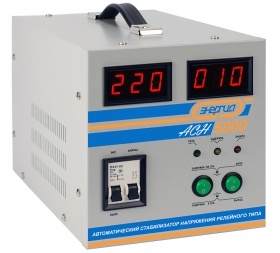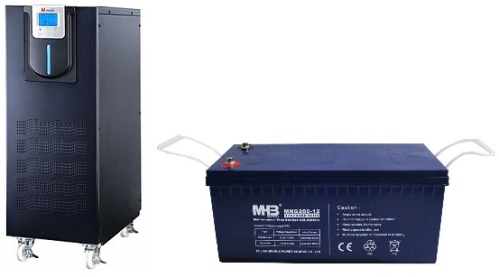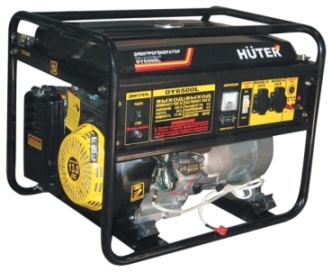Categories: Featured Articles » Autonomous power supply
Number of views: 8737
Comments on the article: 0
How to organize an autonomous power supply for an apartment
When the light goes out in a house or apartment, not only does the connection with civilization disappear, but the products in the refrigerator begin to deteriorate, especially in the summer, especially in the southern regions. Someone did not have a gas, but an electric stove, not to mention a computer, TV, electric kettle, etc. This was fully felt by those who lived in the 90s. On the territory of Russia and the CIS during that difficult period, here and there, there were regular interruptions in electricity, and it was not uncommon that entire city blocks were saved in the evenings only with wax candles.
And although the dashing 90s are behind, in some places even today there are sometimes interruptions in power supply. This problem, of course, is solved by the use of modern uninterruptible power supplies (UPS) or liquid fuel generators. But not every homeowner can afford high-quality autonomous power supply for an apartment, not to mention a large private house.
Nevertheless, within the framework of this article, let us consider the possibilities for autonomous electrification of a home, estimate the approximate costs in relation to various options, and begin with elementary stabilization.
How to protect yourself from power surges
In the simplest case, you can protect yourself from power surges in winter, when city dwellers resort to electric heaters and water heaters in bulk, so that the voltage in the network either drops, then jumps again, and some of your equipment may suffer from these surges. Here the simplest will save relay or triac stabilizer. For a small apartment, a 5 kW stabilizer is enough, which will cost $ 100 - $ 200.

Such a stabilizer is a device where a 5 kW transformer has a secondary winding with several steps, and as soon as the input voltage drops, the relay switches to a part of the secondary winding with a higher voltage. If you install such a stabilizer at the supply to the apartment, then you will save your home from power surges.
How to protect your home network from interruptions
For an apartment, an uninterruptible power supply that will accumulate electricity in the batteries is best suited, and when the electricity disappears in the network, it will automatically switch to power from these charged batteries through the inverter. Based on the calculation of 5 kW for 3 hours of autonomous power supply, which is equivalent to 1 kW for 15 hours, you will need a UPS with a block of 12 volt batteries for a total capacity of 1250 Ah.

All together with the inverter will cost the homeowner about 2000 - 4000 dollars. Best UPS Samples work on-line, that is, they constantly work in stabilizer mode while there is power in the network, while maintaining the batteries charged, and instantly switch to battery power when the electricity in the network disappears.
A powerful UPS can calmly power an electric boiler (especially if we are talking about a private house) and household appliances of an apartment for several hours. In the simplest case, you can purchase batteries, charger and inverter separately.
Use of combustible fuel generators
Gas, gasoline and diesel generators are capable of generating electricity continuously, without having to resort to its accumulation in the form of a charge in batteries. It is enough to fill the tank with gasoline (or diesel fuel) or screw the gas bottle, and the power supply is restored. However, it will be necessary to take care of the exhaust gases, because the internal combustion engine will certainly emit them in the process in a considerable amount. Someone manages to put a working generator on the balcony.
Among the electric generators for combustible fuel, there are different models. Some are air-cooled, others are liquid-cooled. Air-cooled generators are most affordable, compact, unpretentious in maintenance, however they cannot work for a long time - they overheat, and it takes time to cool down.
Liquid-cooled diesel generators are able to work for a long time without interruptions and do not overheat at the same time, however they are more bulky and require special professional installation. Best of all, if the generator is equipped with an autostart system based on an interruption signal in the centralized power supply network.

A gasoline generator is the cheapest, for $ 450 you can buy a 5 kW generator with a 22-liter tank. One full refueling is enough to deliver an active power of 4 kW to the load for 10 hours. Often, gasoline generators support propane-butane.
Optimization of autonomous home power supply
The advantages and disadvantages of a particular solution are obvious. The UPS is small in size, does not create a lot of noise, does not produce exhaust gases, but it is not designed for a long time, unless you have to install a lot of batteries, which is not always economical.
The burned fuel generator will work while there is fuel in the tank, but it will have to be turned off periodically to allow it to cool. In addition, exhaust gases and noise are obvious disadvantages of such a generator, not to mention the need for regular maintenance and refueling. Gas generator it works quieter and the exhaust creates less, however, permission is required from its authorities to install it.
It is best to organize a joint autonomous system from a fuel generator and a UPS. Then the batteries of the uninterruptible power supply will be able to power consumers of small power: lighting, a TV, a refrigerator, and the gasoline generator can be left to power the boiler or used for emergency recharging of UPS batteries during a period of time when the UPS is not used actively.
Alternative solutions

If you have a balcony on the sunny side of the house, then you can resort to an alternative solution. Install on the balcony solar panel at 250-300 watts, and let it charge the batteries of your uninterruptible power supply. Such a solution seems at first glance very exotic, but as an option it can also come in handy as a last resort.
If you want to save on the purchase of a solar battery, then with a certain creative approach, you can assemble it yourself; buying solar cells for such power will cost you 100 - 150 dollars. Will remain to collect charge controller and connect it to the batteries of your UPS.
See also at bgv.electricianexp.com
:
